
Authors: Mike Smith and Ken McQueen, NRG Steering Committee
Extract from National Rock Garden Newsletter No. 20, November 2020
As the National Rock Garden (NRG) progresses to the next stage of acquiring the large rocks identified by our State Rock Selection Sub-Committees (RSSCs), the NRG Steering Committee is developing an aspirational priority list of key samples. Some of those significant rocks are discussed in this article.
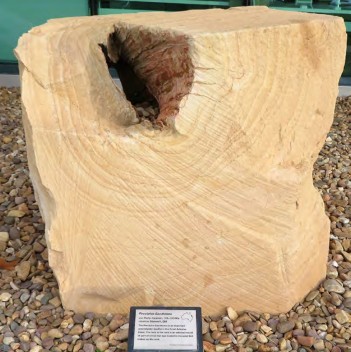
From an educational perspective, a very desirable rock for the NRG is a specimen of Precipice Sandstone, which is one of the important groundwater aquifers within the Great Artesian Basin. The rock is a medium to coarse- grained, porous sandstone consisting of quartz, feldspar and volcanic fragments in a silica-clay-goethite matrix. It was deposited in the Early Jurassic in braided and meandering streams and rivers.
This specimen came from a quarry at Stanwell in Queensland. The hole in the rock is an external mould of part of a tree that was buried with the sands that make up the rock. The Queensland RSSC is investigating the options to acquire such a specimen.
Another good example of a current target rock is the approx. 1.7 billion year old Paleoproterozoic Hores Gneiss, which hosts the massive Pb–Zn–Ag sulphide mineralisation of the Broken Hill Line of Lode. The unit is a medium to fine-grained gneiss with evenly distributed, abundant garnet porphyroblasts. A porphyroblast is a large mineral crystal in a metamorphic rock which has grown within the finer grained matrix. Biotite gneissosity (layering) is well developed and pegmatitic quartzo- feldspathic segregations are common. The NSW RSSC is negotiating access to a suitable specimen for the NRG.
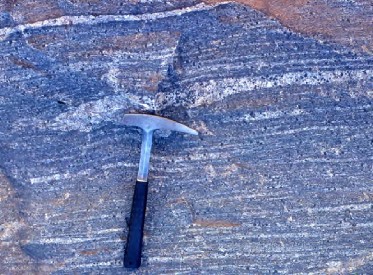
One aspirational rock from Victoria is the Grampians Sandstone, which supplied the facades of many important buildings in Melbourne, including Parliament House, the Town Hall, the State Library, the Treasury Building, the old Post Office in Elizabeth Street and the Port Authority Building in Market Street. The rock is a marginal marine/fluvial sandstone of early Paleozoic age. Large blocks have been inspected at Heatherlie Quarry (locally known as Mount Difficult Quarry – see image above) established in the 1860s, and located on the eastern side of the Grampians off Mt Zero Road.
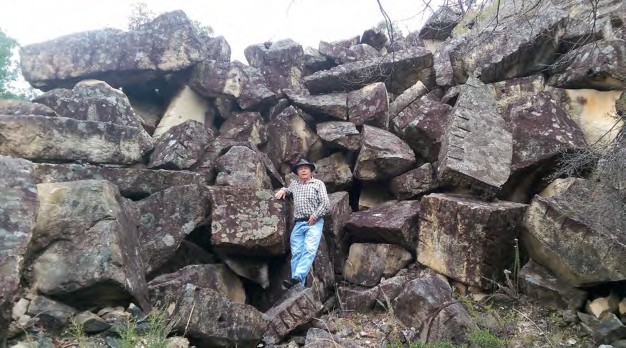
Kalbarri National Park in WA is the location of the Silurian Tumblagooda Sandstone, which contains the trackways (footprints) from Kalbarria (an arthropod with 11 pairs of legs), making an interesting story for children and others! A challenge for the NRG will be locating specimens for which we can obtain approval for transfer to the ACT. The Kalbarri Skywalk which opened in June 2020 is a brilliant engineering feat overlooking the Murchison Gorge (See https://parks.dpaw.wa.gov.au/site/kalbarri-skywalk).
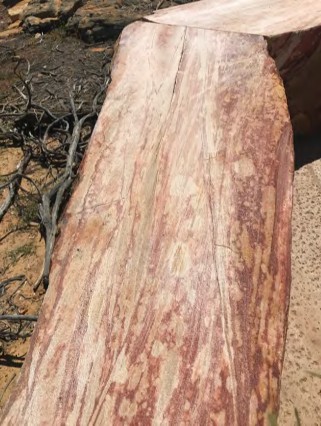
DID YOU KNOW?
The Murchison River is one of the only rivers in WA which has no introduced fish species
The NRG is planning to add Mt Isa’s Eastern Creek Volcanics, considered a significant source of indigenous stone tools on the traditional lands of the Kalkadoon people. These Paleoproterozoic rocks are a series of copper-enriched tholeiitic basalts which occur adjacent to the giant sediment-hosted Mount Isa copper deposit in Queensland. The volcanic rocks are often cited as the source of metals for the deposit. The Queensland RSSC has recently inspected field exposures of these rocks.
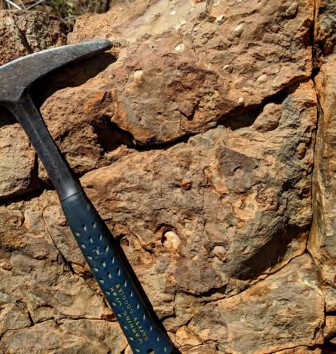
Conclusion
An example from Tasmania of one of our target rocks is the Cambro-Ordovician Owen Conglomerate, which is described earlier in this newsletter.
This is an attractive and significant rock which makes up some of the spectacular mountains in western Tasmania, including Mount Owen, near Queenstown and Mount Roland, just south of Sheffield. The Tasmanian RSSC is seeking a potential specimen for the rock garden.
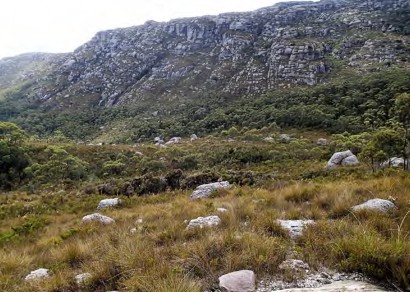
To acquire these and other important rocks the National Rock Garden will need assistance and significant funding for their transport and preparation. The NRG is calling for such support from the Geoscience community and from the general public.
Any assistance is most welcome including tax-deductible funding donations and in-kind assistance in generating scientific rock descriptions or lay-person rock descriptions which will be linked to the QR codes on rock plaques.
Support and donations can be directed through either of the authors or through the Chair of the Steering Committee, Emeritus Professor Brad Pillans (using [email protected]).


